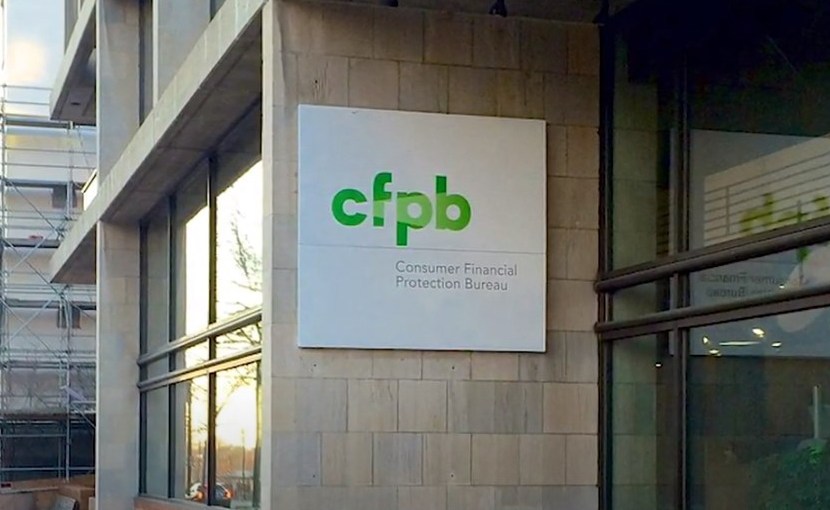
CFPB Issues Rules on Transition as Federal Foreclosure Protections Expire

The Consumer Financial Protection Bureau on Monday finalized amendments to federal mortgage servicing regulations in response to federal foreclosure moratoria phasing out later this summer.
The Bureau said the amendments would help protect mortgage borrowers from “unwelcome surprises” as they exit forbearance and support the housing market’s smooth and orderly transition to post-pandemic operation. The rules will establish temporary special safeguards to help ensure that borrowers have time before foreclosure to explore their options, including loan modifications and selling their homes. The rules cover loans on principal residences, generally exclude small servicers, and will take effect on August 31.
“As the nation shifts from the COVID-19 emergency to the economic recovery, we cannot be complacent about the dangers we still face,” said CFPB Acting Director Dave Uejio. “An unchecked wave of foreclosures would drain billions of dollars in wealth from the Black and Hispanic communities hardest hit by the pandemic and still recovering from the impact of the Great Recession just over a decade ago. An unchecked wave of foreclosures would also risk destabilizing the housing market for all consumers. We are giving homeowners the time and opportunity to make informed decisions about the best course of action for them and their families, whether that is seeking a loan modification or selling their home. And we are giving mortgage servicers the flexibility they need to serve homeowners with dignity, while managing an unprecedented volume of borrowers seeking assistance.”
More than seven million homeowners took advantage of COVID-19 hardship forbearance, temporarily pausing the obligation to make their mortgage payments, while they resolved financial insecurity caused by the pandemic and its effects. On Monday, the Mortgage Bankers Association reported two million homeowners remain in forbearance.
“Not even during the worst of the Great Recession have so many borrowers been so far behind,” the Bureau said in a press release. “Over 3% of all borrowers are now four months or more behind on their mortgages, which is the point when a foreclosure may be initiated. Once the federal foreclosure moratoria lift, these homeowners are at risk of having foreclosure started as soon as they exit forbearance, with at least 900,000 homeowners projected to exit forbearance between now and the end of the year.”
Theamendments require the following to prevent avoidable foreclosures:
- Give borrowers a meaningful opportunity to pursue loss mitigation options. As borrowers exit forbearance, they need time to process their current options and consider next steps. As such, to ensure that borrowers can pursue foreclosure avoidance options, servicers must meet temporary special procedural safeguards before initiating foreclosures for certain mortgages through the end of the year.
- Allow mortgage servicers to help borrowers faster. Under the new temporary rule, servicers can offer streamlined loan modifications to borrowers with COVID-19-related hardships without making borrowers submit all the paperwork for every possible option. These streamlined loan modifications cannot increase borrowers’ payments and have other protections built into them. With this flexibility, servicers can get borrowers into affordable mortgage payment plans faster, with less paperwork for both the servicer and the borrower.
- Tell borrowers their options. Servicers will be required to increase their outreach to borrowers before initiating foreclosure and tell borrowers key information about their repayment or other options when they communicate with borrowers who are exiting forbearance or struggling to make mortgage payments.
The Bureau said generally, borrowers will have at least three options to bring their mortgages current and avoid foreclosure:
- Resume regular mortgage payments. Servicers can move a borrower’s missed payments to the end of the mortgage, commonly called “deferral.”
- Lower their monthly mortgage payments. Loan modifications can change the interest rate, principal balance, or length of the mortgage.
- Sell their homes. For homeowners with sufficient equity, a sale may be a possibility. However, long-term forbearance may have significantly eroded borrowers’ equity, and home prices may dip if the market is inundated with home sales.
Under the amendments, foreclosures can start if the borrower:
- Has abandoned the property;
- Was more than 120 days behind on their mortgage before March 1, 2020;
- Is more than 120 days behind on their mortgage payments and has not responded to specific required outreach from the mortgage servicer for 90 days; or
- Has been evaluated for all options other than foreclosure and there are no available options to avoid foreclosure.
